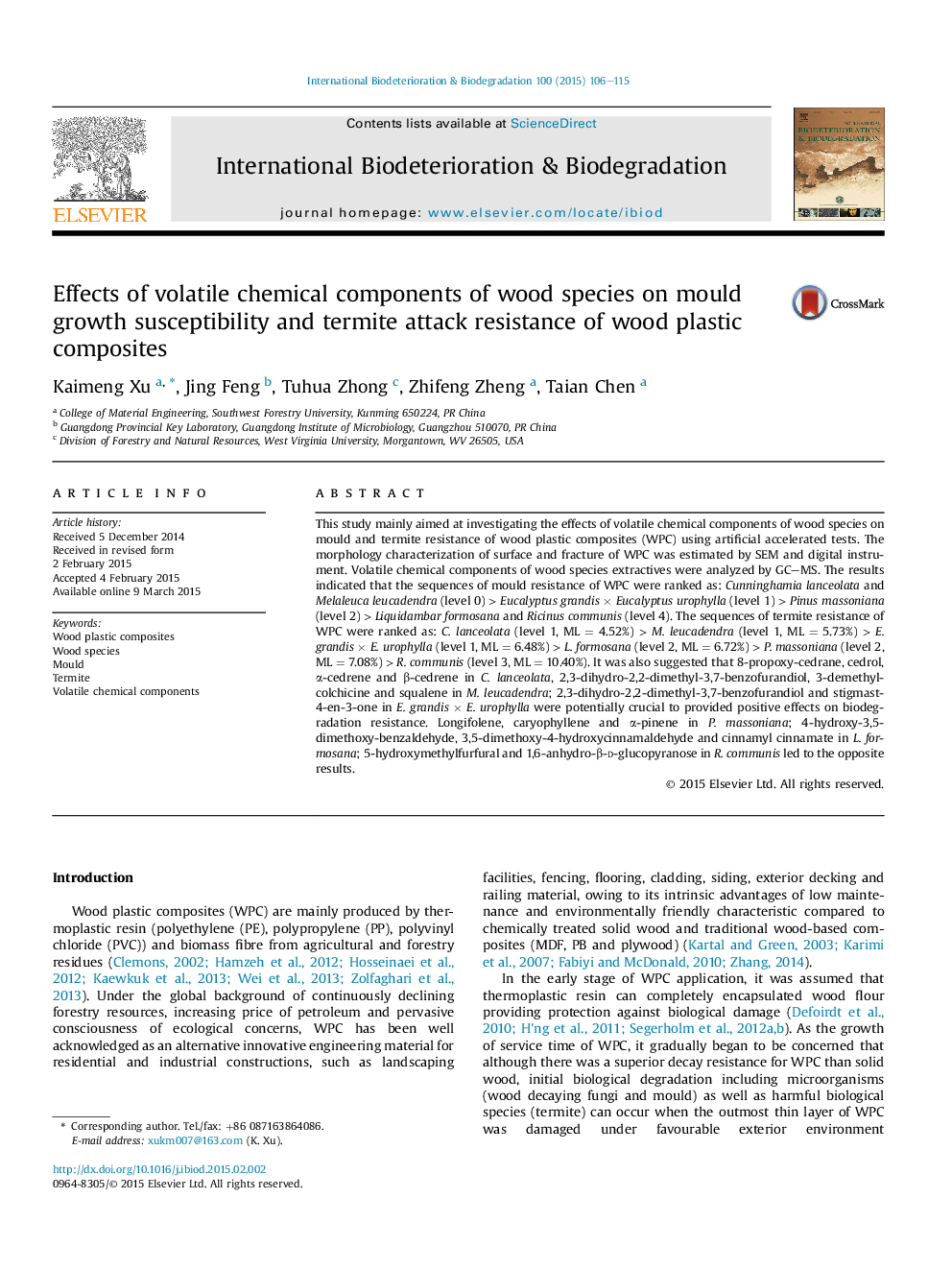| Article ID | Journal | Published Year | Pages | File Type |
|---|---|---|---|---|
| 4364441 | International Biodeterioration & Biodegradation | 2015 | 10 Pages |
•Wood species was a potential factor to biodegradation resistance of wood plastic composites.•The channels between wood flour and PVC existed for movement of spores and hyphae.•WPC made from Cunninghamia lanceolata and Melaleuca leucadendra had excellent abilities to biodegradation resistance.•WPC made from Liquidambar formosana, Pinus massoniana and Ricinus communis had weak abilities on biodegradation resistance.
This study mainly aimed at investigating the effects of volatile chemical components of wood species on mould and termite resistance of wood plastic composites (WPC) using artificial accelerated tests. The morphology characterization of surface and fracture of WPC was estimated by SEM and digital instrument. Volatile chemical components of wood species extractives were analyzed by GC–MS. The results indicated that the sequences of mould resistance of WPC were ranked as: Cunninghamia lanceolata and Melaleuca leucadendra (level 0) > Eucalyptus grandis × Eucalyptus urophylla (level 1) > Pinus massoniana (level 2) > Liquidambar formosana and Ricinus communis (level 4). The sequences of termite resistance of WPC were ranked as: C. lanceolata (level 1, ML = 4.52%) > M. leucadendra (level 1, ML = 5.73%) > E. grandis × E. urophylla (level 1, ML = 6.48%) > L. formosana (level 2, ML = 6.72%) > P. massoniana (level 2, ML = 7.08%) > R. communis (level 3, ML = 10.40%). It was also suggested that 8-propoxy-cedrane, cedrol, α-cedrene and β-cedrene in C. lanceolata, 2,3-dihydro-2,2-dimethyl-3,7-benzofurandiol, 3-demethyl-colchicine and squalene in M. leucadendra; 2,3-dihydro-2,2-dimethyl-3,7-benzofurandiol and stigmast-4-en-3-one in E. grandis × E. urophylla were potentially crucial to provided positive effects on biodegradation resistance. Longifolene, caryophyllene and α-pinene in P. massoniana; 4-hydroxy-3,5-dimethoxy-benzaldehyde, 3,5-dimethoxy-4-hydroxycinnamaldehyde and cinnamyl cinnamate in L. formosana; 5-hydroxymethylfurfural and 1,6-anhydro-β-d-glucopyranose in R. communis led to the opposite results.
